In the back of a taxi heading from my hotel in the far East of Singapore towards the National University of Singapore in the west, my eye follows the container port that stretches for miles along the coast. My thoughts have been occupied by containers and the politics of global shipping for the last few weeks due to the Ship of Empty Boxes conference and to be witnessing a transport hub on this scale all seems very pertinent. Apparently the entire port is going to me moved along the coast, presumably to make way for more fancy hotels and ocean view appartments. The fact that Singapore seems to be reclaiming land on a grand scale makes me think this absurd logistical nightmare of moving an entire port down the road is just part of Singapore’s daily grind.
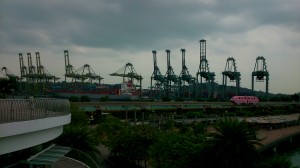
Later, I see ships on the horizon from my hotel window and find an underpass that takes me to the water’s edge where I watch these huge boats waiting in the sea. I’m no closer to knowing what they are doing out there. I visit an exhibition by the artist (and ex-sailor) Charles Lim who has been making work about Singapore’s relationship to the ocean. In a video piece you see an arial shot of him floating in an expanse of sea – an odd site for a seascape that is usually associated with shipping rather than swimming
Singapore has been hot, but apparently it’s experiencing a welcome cool spell. The taxi takes me to see Terence Chong who works at the Institute for Southeast Asian Studies. Waiting for him, I browse the ISEAS books on pirates and globalisation. Terence and I plot the details for the 1984 Dinner the following evening. That evening I meet Paul Rae who takes me to a Hawker Market opposite my hotel and we eat some very tasty food, the small food outlets all under one canvas serve a range of Chinese, Malay and Indian food. We were spoilt for choice. I return here everyday to try something different. Later in the week, I ask the silly question if there are any fields in Singapore. This city really does seem to embody globalisation – all supplies are shipped in (there’s no Transition Town movement here, as far as I’m aware).
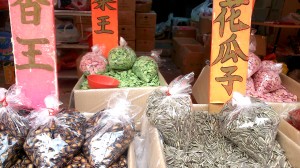
The whole place lends itself to dystopian fiction – it wouldn’t take much to render this city-state unlivable if cut off from the ships that sail towards and away from it on a daily basis. I picture a humanless dying city, weeds growing through the immaculate hotel lobby floor and sunbleached rusting containers still piled high. I need to look into this, but apparently many of its authors focus on lost, contentious histories rather than dwell on future problems.
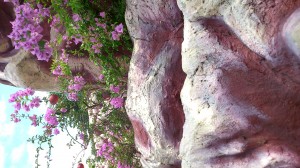
The National Museum tells Singapore’s history through ‘events’ or ‘stories’ – the audio guide asks you which path you want to take. It’s a busy, fact filled display, that warrants revisiting. Before Raffles took possession of the island on behalf of the British East India Trading Company in the early 19th Century, there were 1000 people living on the island, there are now over 5 million. The museum shows pictures of some of the unpaid workforce of Indian slaves who built the city. The city continues to be in a constant state of redevelopment, physically constructed by underpaid ‘transient workers’ in a country with no minimum wage. Talking to various taxi drivers, I keep hearing stories of how stressful the city is and how much they want to escape it, relying on the good fortunes of their offspring to get them out of here.
The 1984 dinner went well, I’ll write more on that later. So much was covered, mainly focusing on the work of the political theatre group, Third Stage, two members of which were at the table. Among the things discussed were the form their work took, the sense there was a promise of change in the air, the influence of Philippine Educational Theater Association (PETA), the roll of Shell as a sponsor of theatre in the 1980s, the way in which political theatre at the time was one of the only vehicles for talking back to the state, the banning of forum theatre (from 1994-2004), what it means to develop an anti-state narrative, stories of censorship, arrest, aesthetic camoflage and Singapore’s current relationship to civil disobedience and public space.
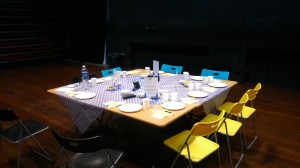
There is a different threshold of risk now. You still have to submit your script to be vidmate checked by the Media Development Authority (although this process is taking a worrying turn as arts administrators are expected to internalise the process becoming their own self-censors). I went to visit Speakers Corner, the site for approved protest in Singapore (the only type of protest tolerated). There is a stage in the corner, neatly cut grass and a sign with a list of terms and conditions for demonstrators to follow.
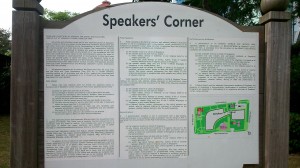
Happy Lunar New Year!